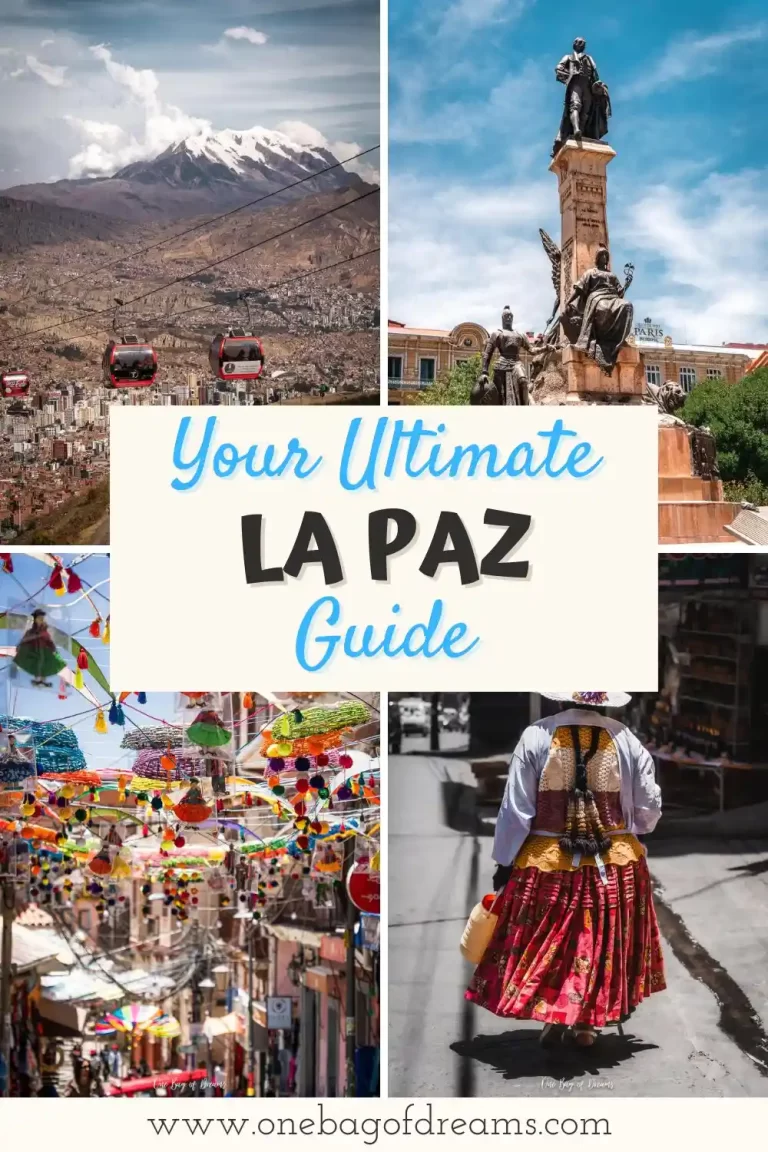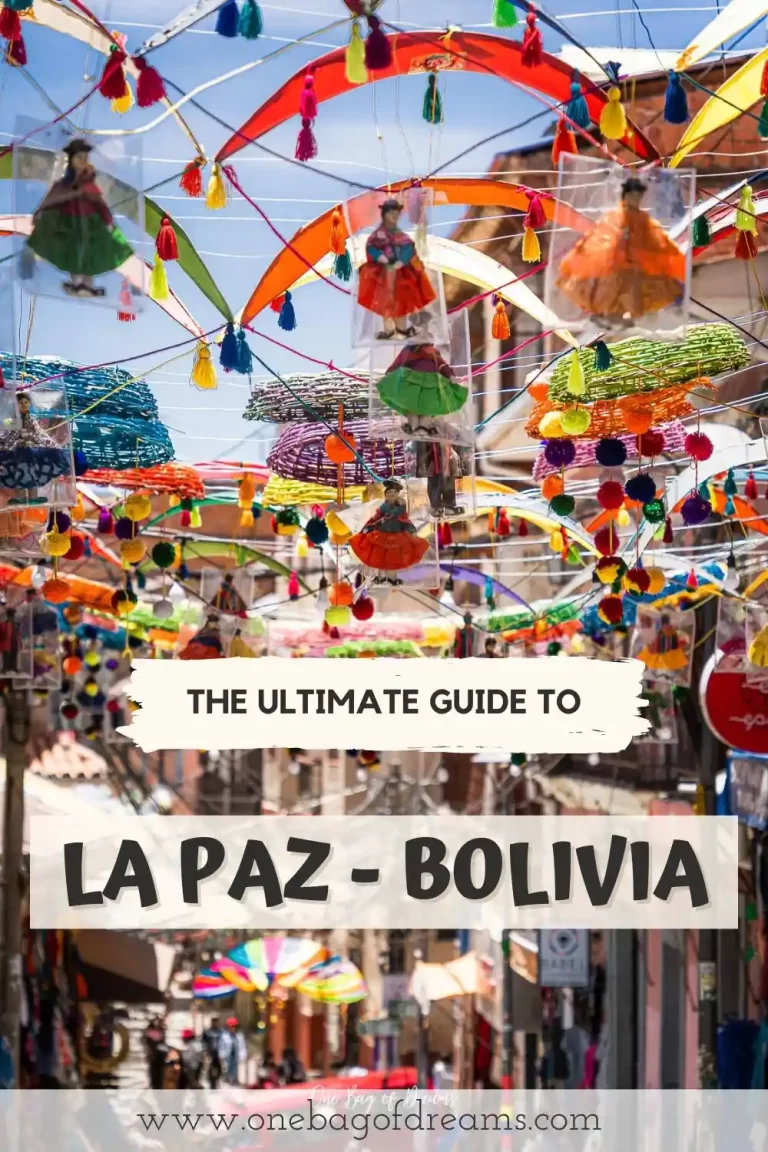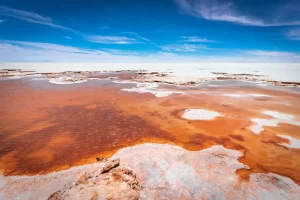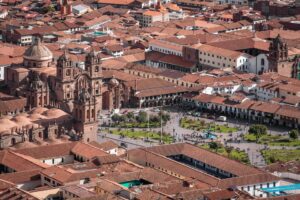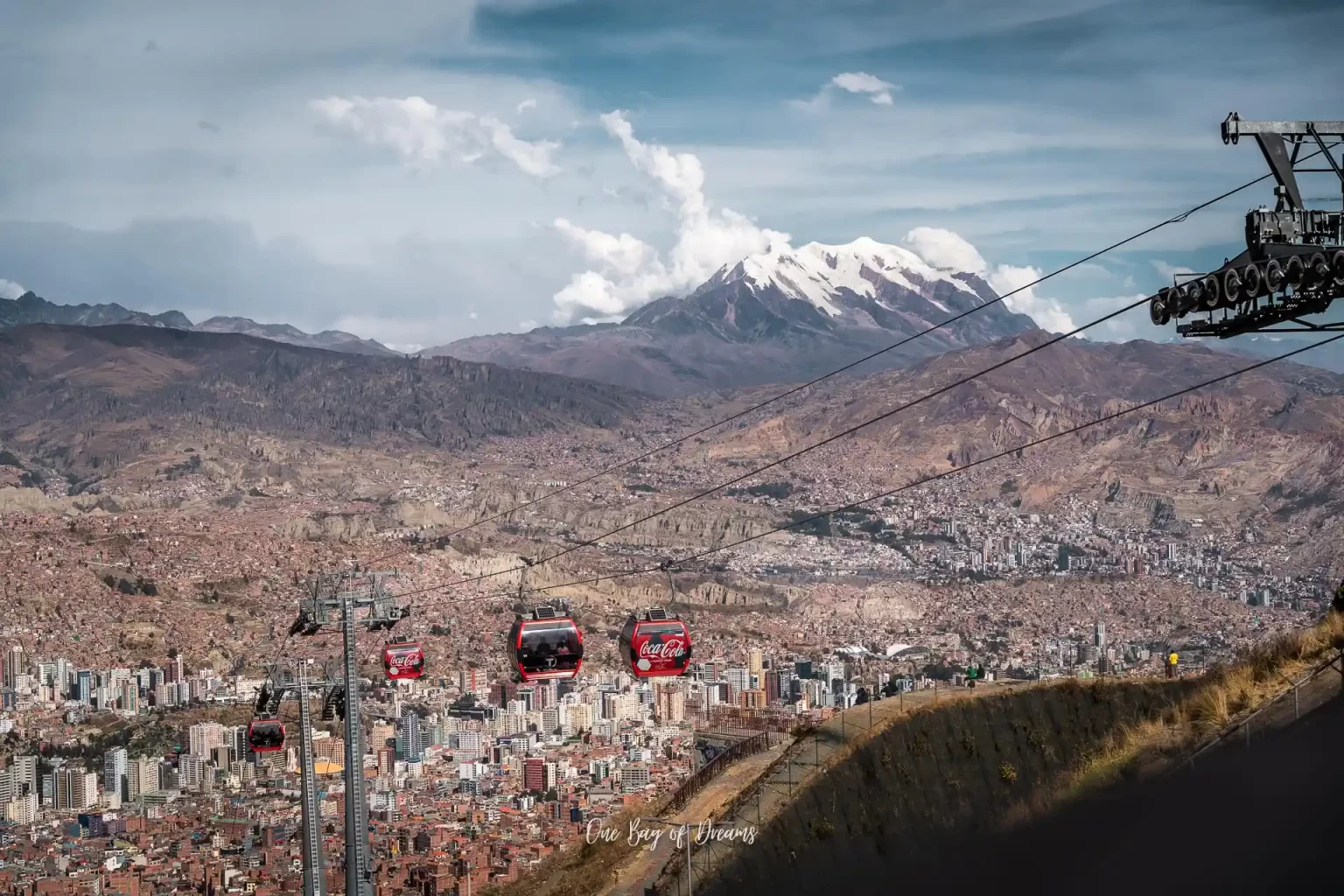
Exploring the Wonders of La Paz: A Travel Guide to Bolivia's Captivating Capital
La Paz, the administrative capital of Bolivia, is a city full of contrasts and surprises. Located at an altitude of over 3,600 meters above sea level, it is known for its stunning mountain views, colourful markets, bustling nightlife, and rich cultural heritage. In this travel guide, I’ll take you on a journey through the vibrant streets of La Paz and show you the best things to see and do. Whether you’re a first-time visitor or a seasoned traveller, this guide will help you make the most of your time in this fascinating city.
Contents
About La Paz
La Paz, situated in the Andes Mountains at an elevation of over 3,600 meters, is not only the highest administrative capital in the world but also one of the most unique and diverse cities in South America. Its geography is characterized by steep hills and deep valleys that form a natural amphitheatre. The city is divided into two main areas: El Alto, a sprawling suburb that sits on the Altiplano plateau above La Paz, and the historic centre of La Paz, which is located in a valley below.
La Paz has a cool and dry climate, with temperatures averaging around 10°C throughout the year. Due to its altitude, the sun is strong and the air is thin, so it is important to take precautions to prevent altitude sickness when visiting.
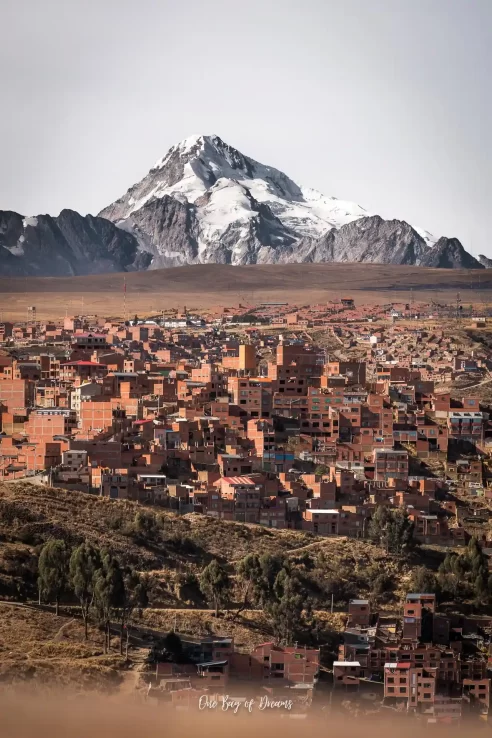
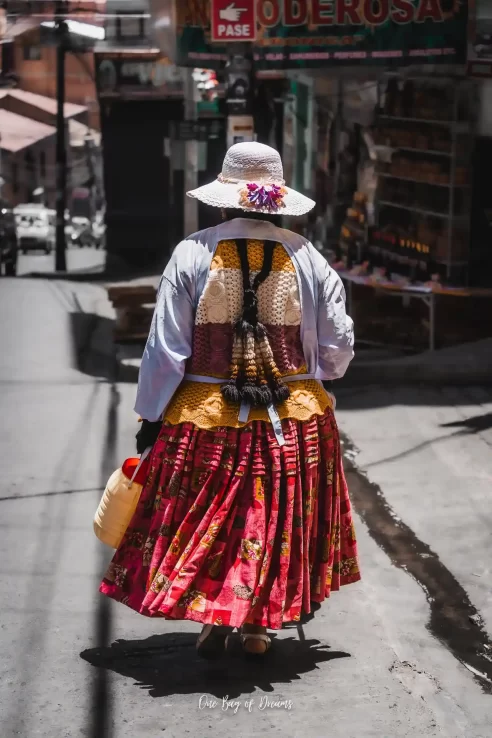
La Paz has a rich history and cultural background, as the Spanish founded it in the 16th century and later became a centre for indigenous resistance during the colonial period. Today, it is home to a diverse population that includes indigenous people, mestizos, and people of European descent. The city is renowned for its vibrant street markets, colourful festivals, and traditional music and dance. Visitors can explore the museums, art galleries, and historical landmarks to learn more about the city’s fascinating past and present.
Top Things to See and Do in La Paz
La Paz, Bolivia‘s cultural and administrative capital, is a city that offers visitors an endless array of things to see and do. From exploring its rich history and culture to indulging in its culinary delights, there is something for everyone in La Paz. This bustling city is home to unique experiences, including the world-renowned Witches’ Market. With its fascinating museums, vibrant street life, and stunning natural scenery, La Paz is a destination that is sure to leave a lasting impression on all who visit. In this guide, we will take a closer look at the top things to see and do in La Paz, so you can make the most of your time in this incredible city.
Go on a Free Walking Tour Through the City Center
The first thing I would recommend doing is taking an (almost) free walking tour through La Paz. This will show you around the most important sights and places to visit in La Paz and will help you set your bearings in this chaotic city.
The free walking tour by Red Cap in La Paz is a great way to explore the city’s historic centre and learn about its rich culture and history. The tour is led by knowledgeable and enthusiastic local guides who are passionate about sharing their insights into the city. The tour covers a range of attractions, including the Witches’ Market, San Francisco Church, Plaza Murillo, and the colonial streets of La Paz. Along the way, you will learn about the city’s indigenous and colonial heritage, as well as its contemporary culture and politics.
Besides being not totally free (it has a cost of 3 USD), it is a great way to get an authentic glimpse into life in La Paz. Overall this has been one of my favourite walking tours in all of South America. The tour runs every day at 10 a.m. and 2 p.m. in the centre of Plaza San Pedro.
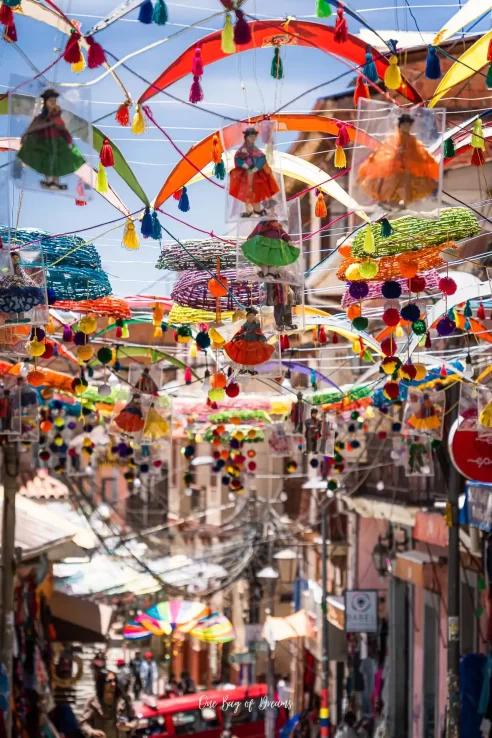
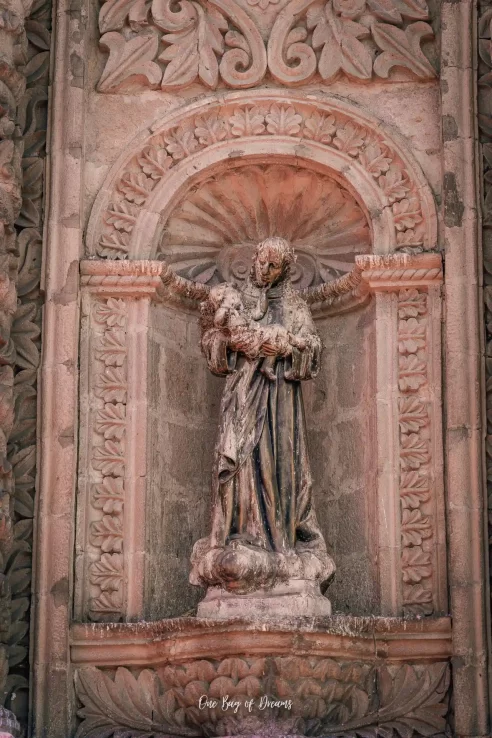
Visit San Francisco Basilica
San Francisco Basilica in La Paz is a magnificent building that is a must-visit destination for any traveller who is going to visit La Paz in Bolivia. This historic church dates back to the 16th century and boasts a unique blend of Christian and Aymara culture in its decoration. It is a peculiar mix that tries to combine two different religions – Christianity, brought here by the Spaniards and the local Aymara religion and beliefs of living in peace with Mother Earth (Pachamama). The building’s unique decoration with intricate carvings, murals, and statues is a mix of Christianity and Aymara culture, and observing its outer facades, one can see a rich symbolism of Catholicism interspersed with Pachamama motifs.
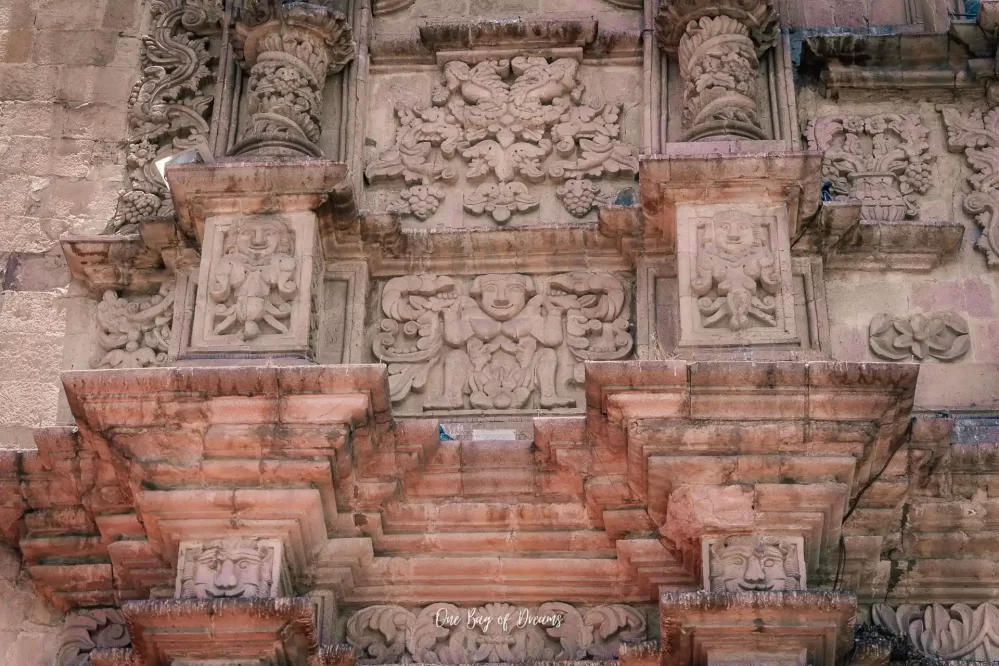
The Spaniards realized that the local belief in the afterlife might be used to their advantage, making the locals convert to the Catholic faith. They hung mirrors in churches and convinced uneducated Bolivians that every time their soul leaves the body, it’s trapped in a mirror in the church, so they have to come to the church to claim it back. This wretched and perfidious manipulation was so effective that now around 80% of the society is Catholic, but only 10% attend religious services, showing that it’s impossible to make someone believe in something by force.
The Basilica is open every day from 6:30 a.m. until 7:30 p.m. and it’s free to visit.
Wander Plaza Murillo
Plaza Murillo is not only the political centre of La Paz, but it is also the oldest square in the city. It is named after the Bolivian war hero, Pedro Domingo Murillo, who led the fight for Bolivia‘s independence against the Spanish Empire. The square is surrounded by important government buildings such as the Presidential Palace, the National Congress, and the Cathedral of La Paz. However, it has also witnessed tragic events throughout Bolivia’s history. In 1879, the square was the scene of the execution of the indigenous leader, Tupac Katari, who led the rebellion against the Spanish Empire in the 18th century. In more recent history, in 2003, during the “Gas War,” the square was the site of violent clashes between protestors and police, resulting in the death of dozens of people.
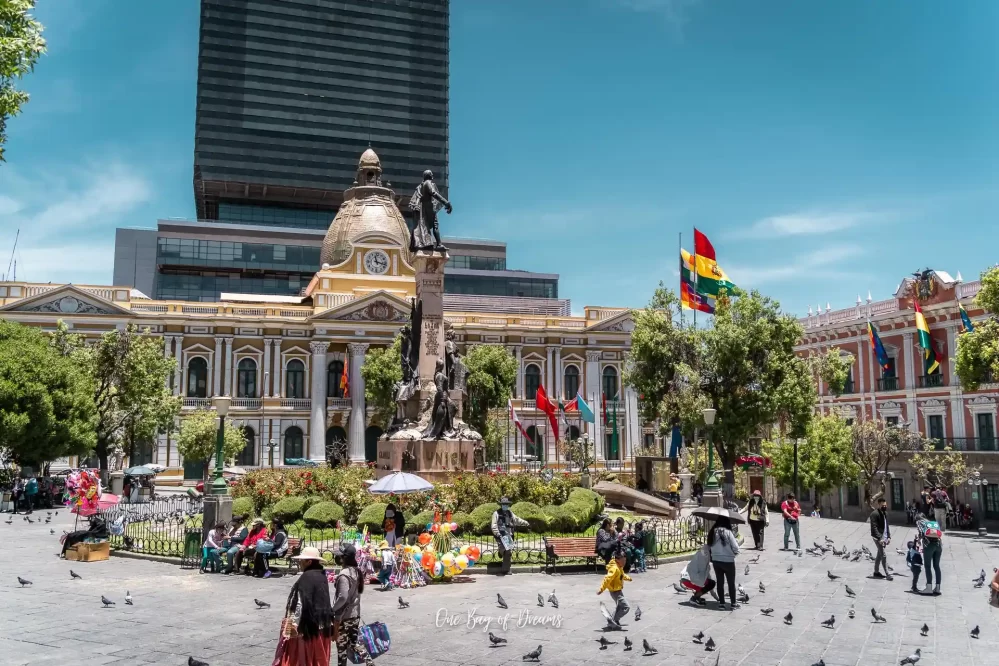
During the gas war in 2003, Plaza Murillo played a pivotal role in the events that unfolded. The square was the site of intense protests against the government’s decision to export natural gas without providing enough for domestic use. The government responded with force, resulting in violent clashes between protesters and the police. The conflict reached its climax when the army opened fire on the protesters, killing over 60 people and injuring hundreds more. If you look closely around the square you can still see the bullet holes in the walls, the ground or even in the lampposts. Today, the square serves as a reminder of the country’s tumultuous past and the ongoing struggles of the Bolivian people for justice and equality. Despite its dark history, the square remains a popular destination for visitors to La Paz, and its iconic buildings and statues offer a glimpse into Bolivia’s rich cultural heritage.
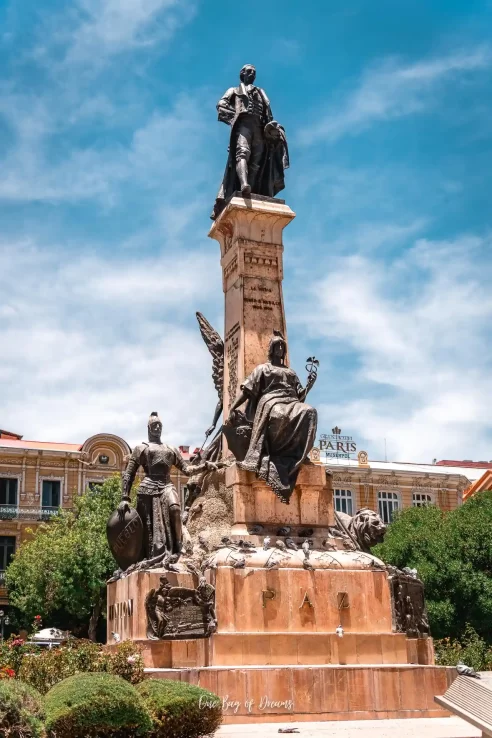
See Mercado Rodriguez
The Mercado Rodriguez is a must-visit place in La Paz for anyone interested in experiencing the local culture and cuisine. This bustling market is located in the heart of the city, and it is the oldest market in La Paz. Here you can find everything from fresh produce to handmade crafts, and traditional Bolivian food. As you wander through the crowded aisles, you will see colourful displays of fruits and vegetables, piles of quinoa and beans, and vendors selling herbs and spices. Furthermore, you will see stalls that see fresh fish from Lake Titicaca, hundreds of variations of potatoes from the Andes and street vendors dressed in colourful traditional Bolivian clothing. Don’t miss the chance to try some of the delicious street food, such as salteñas, a type of savoury pastry filled with beef or chicken and vegetables. The market is a lively and vibrant place, full of energy and character, and it is a great way to immerse yourself in the local culture.
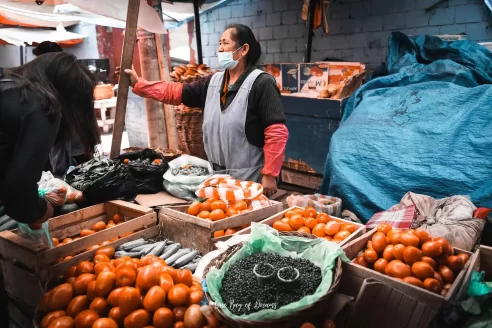
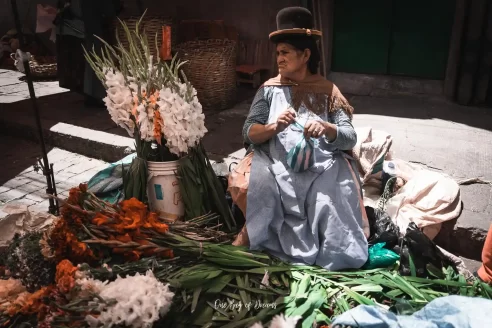
Go to an Art Exhibition in the Cementerio General
The Cementerio General in La Paz is a unique place to visit. Not only is it a burial ground for the deceased, but it is also a display of fascinating art. The graves are adorned with colorful mosaics, sculptures, and paintings, which showcase the rich culture and history of the city. Each grave tells a different story, making it an insightful experience to walk around the cemetery. In particular, the Day of the Dead celebrations, which occur on November 2nd, are an extraordinary event to witness. During this time, the cemetery comes alive with candles, flowers, and music as family members gather to honour and remember their loved ones who have passed away. Visiting the Cementerio General is an opportunity to explore the unique and beautiful art culture of La Paz.
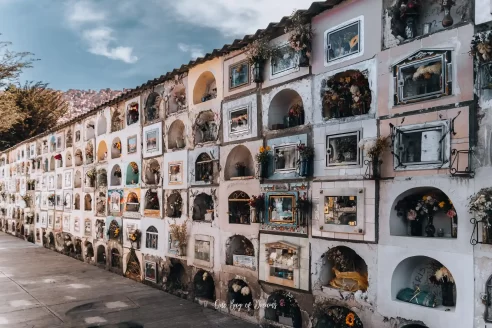
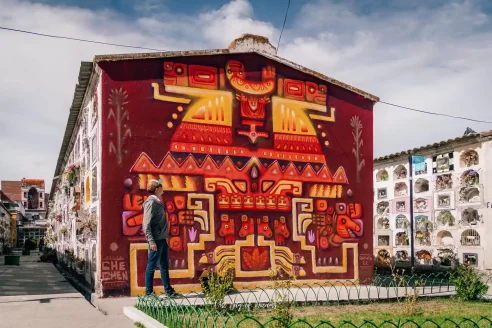
The Cementerio General in La Paz is also known for the vibrant graffiti that decorates the walls. Many local artists have used the cemetery as a canvas to express their creativity, resulting in a unique and colourful display. Walking through the cemetery, visitors can admire the artwork and gain insight into the cultural and social issues that the locals face. Overall, the graffiti in the Cementerio General is a testament to the creativity and spirit of the Bolivian people.
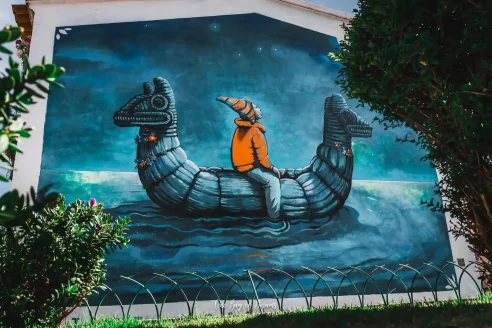
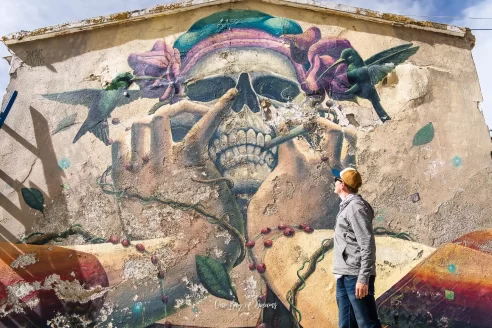
Ride the Teleferico
Riding the teleferico in La Paz is a must-do activity that offers a unique perspective of the city. The cable car system is not only an efficient mode of transportation but also a tourist attraction in itself. The cabins offer a bird’s-eye view of the city, providing panoramic views of the surrounding mountains and sprawling urban landscape. The teleferico has several lines that connect different parts of the city, allowing visitors to explore various neighbourhoods from above. The ride is smooth and comfortable, and the cabins are equipped with large windows, making it easy to take photos and enjoy the view. It’s a great way to get a sense of the city’s layout and appreciate its beauty from a new perspective.
The Teleferico operates every day from 7 a.m. until 11 p.m. and has a cost of 3 Bolivianos per ride.
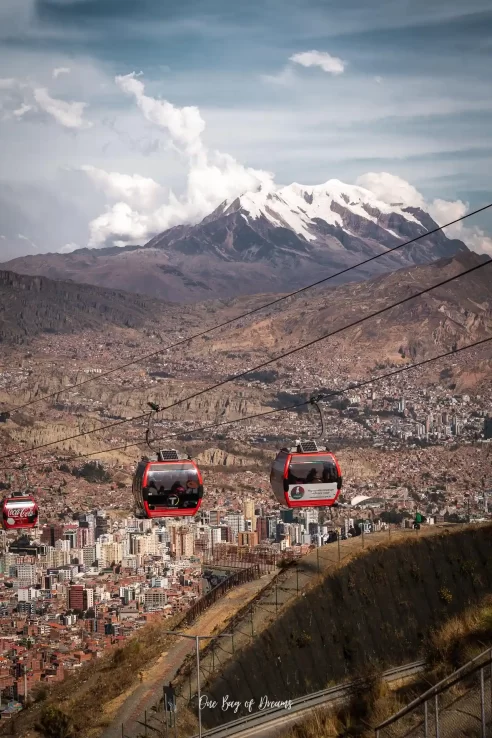
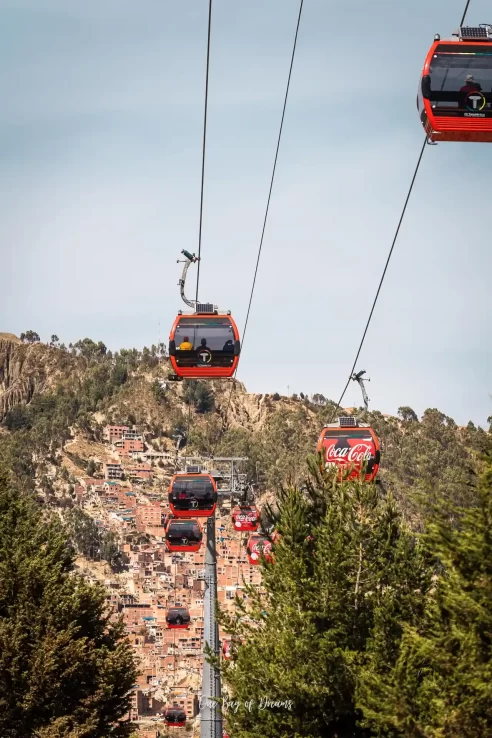
Visit El Alto Market 16 de Julio
El Alto Market, or Mercado 16 de Julio, is one of the largest and most bustling markets in South America. Located in the city of El Alto, just outside of La Paz, it’s a fascinating place to explore for anyone interested in local culture and daily life. The market is spread out over several blocks and offers a dizzying array of products, from fresh produce and meat to clothing and electronics. One of the most unique aspects of the market is the stalls selling traditional Andean goods, such as textiles, musical instruments, and hand-carved wooden items. Visitors can also sample local street food and drinks, like freshly squeezed fruit juice or the popular Bolivian snack, salteñas. The market is busiest in the early morning hours, so it’s best to arrive early to beat the crowds and get the full experience.
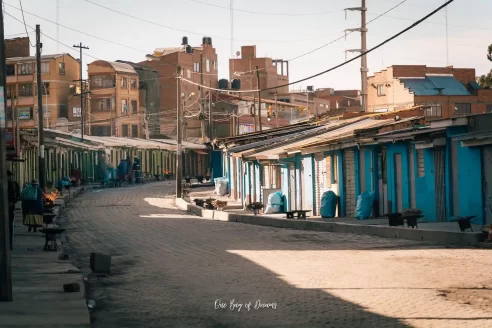


Top Tip: You can visit the El Alto Market and the below-mentioned Cholita Fight together every Thursday and Sunday on the Extended La Paz City Tour of Red Cap.
See a Cholita Fight
Cholita fights, also known as Lucha Libre, is a unique experience that you can witness in La Paz. This is a wrestling match where Bolivian women, known as Cholitas, compete against each other in a ring. The Cholitas wear their traditional dress, which consists of a colourful skirt, a shawl, and a bowler hat. The fights are a mix of athleticism, humour, and cultural tradition. The matches are not violent, but rather a form of entertainment that has been around for decades. If you are looking for an unusual and exciting experience, don’t miss the opportunity to see the Cholita fights in La Paz.
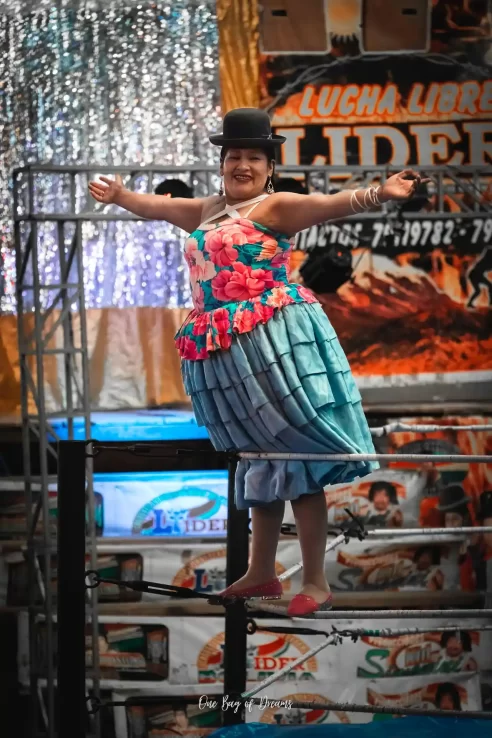
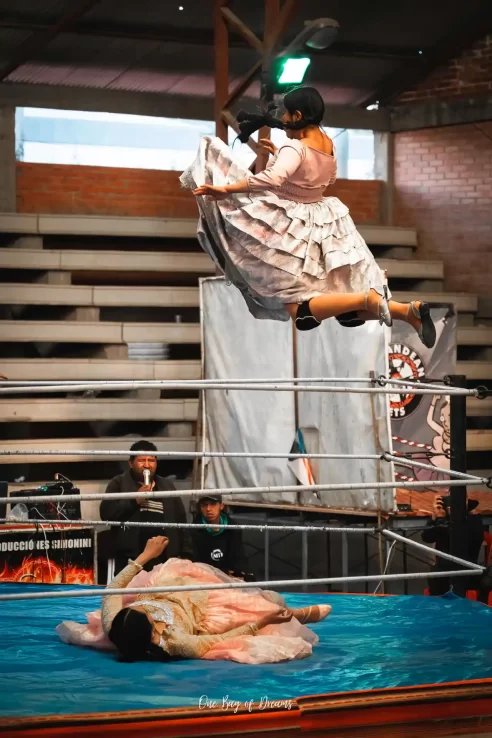
Visit Valle de la Luna
Valle de la Luna, or the Valley of the Moon, is a geological wonder located just outside La Paz. The valley is so named because of its lunar-like landscape, with strange rock formations and towering spires that look like they belong on the moon’s surface. It is a unique and surreal experience to explore the valley’s maze-like formations and strange geological structures. You can walk along the trails and take in the eerie beauty of the valley or even climb up to the top of some of the formations for a panoramic view of the surrounding landscape. It’s definitely worth a visit for those interested in geology, natural landscapes, and outdoor adventures.
Valle de la Luna is located about 10 kilometres from downtown La Paz, and it is accessible by taxi, bus or private transportation. The park is open from Monday to Sunday, from 8:00 a.m. to 6:00 p.m. To get there, you can take a bus from the Cementerio General bus terminal or to Mallasa. Or you can go to the bus stop near San Francisco Church and Sagarnaga Street and catch the bus from there. After 40 minutes you will arrive at Valle de la Luna. The entrance fee is 15 Bolivianos. It is also possible to book a guided tour that includes transportation and entrance fees.
Read More: Sucre is an easy-to-reach destination from La Paz, check out the Ultimate Guide of Sucre, the hidden Gem of Bolivia!
Visit the Witch Market
The Witch Market, also known as Mercado de las Brujas, is a unique and fascinating place to visit in La Paz. Located in the city centre, this market offers an array of traditional Bolivian items, including medicinal plants, dried herbs, animal fetuses, and other unusual items used in Aymara rituals. One of these rituals is to bury a llama fetus underneath the foundation of a house as an offering to Pachamama to prevent accidents during the building process of the house and to get rid of evil spirits.
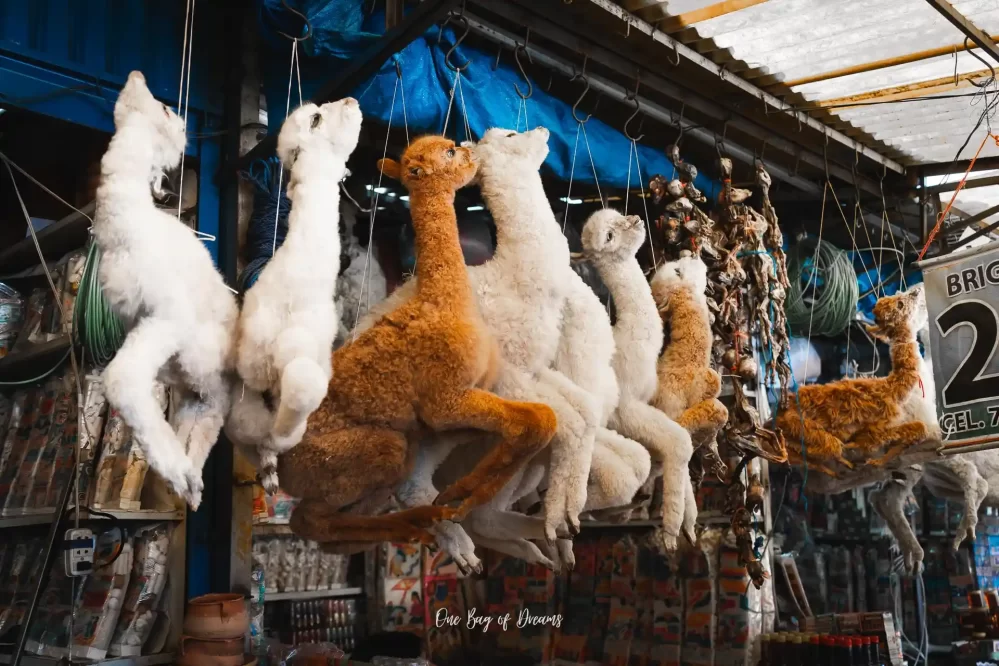
The highlight of the market, however, is the selection of spell ingredients and charms that are believed to bring good luck and ward off evil spirits. Visitors can find everything from llama fetuses to love potions and amulets to cure ailments. The atmosphere is intriguing, and the vendors are friendly and willing to share their knowledge and beliefs with visitors. It’s a must-visit place for anyone interested in Bolivian culture and traditions.

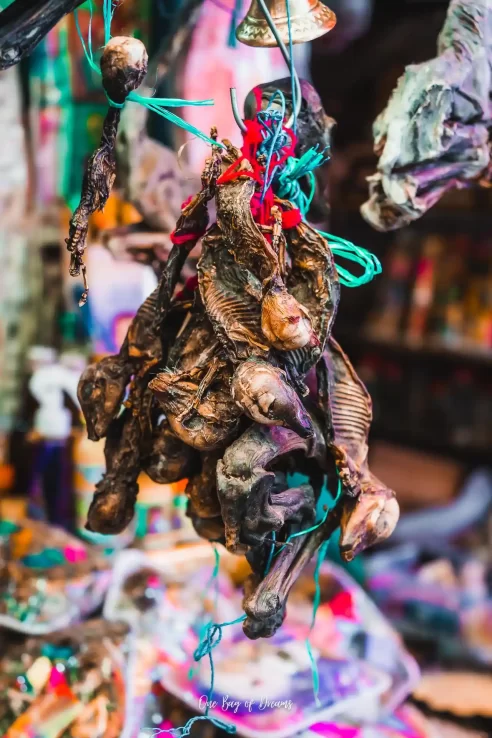
Mirador Killi Killi
Mirador Killi Killi is a popular viewpoint in La Paz that offers breathtaking views of the city. Located in the Miraflores neighbourhood, the viewpoint can be reached by a short taxi ride or a 20-minute walk from the city centre. The entrance to the viewpoint is free, and it is open daily from early morning until sunset. From the top of Killi Killi, visitors can admire the panoramic view of the city, including the sprawling urban areas, the surrounding mountains, and the majestic Illimani peak. It is an ideal spot for photography enthusiasts who can capture the stunning views of La Paz from different angles.
Visit Lake Titicaca
A visit to Lake Titicaca is an unforgettable experience that can easily be added to your itinerary when staying in La Paz. The highest navigable lake in the world, situated at an altitude of over 3,800 meters above sea level, boasts stunning scenery and is rich in cultural history. There are several ways to explore the lake, including visiting the islands of Isla del Sol and Isla de la Luna, where you can learn about the ancient Inca civilization and its fascinating mythology. You can also witness the traditional lifestyle of the local indigenous people who live on the islands, which has remained largely unchanged for centuries. To get to Lake Titicaca from La Paz, you can take a bus or hire a private car for a scenic drive. The journey takes around 3-4 hours depending on the route and stops along the way.
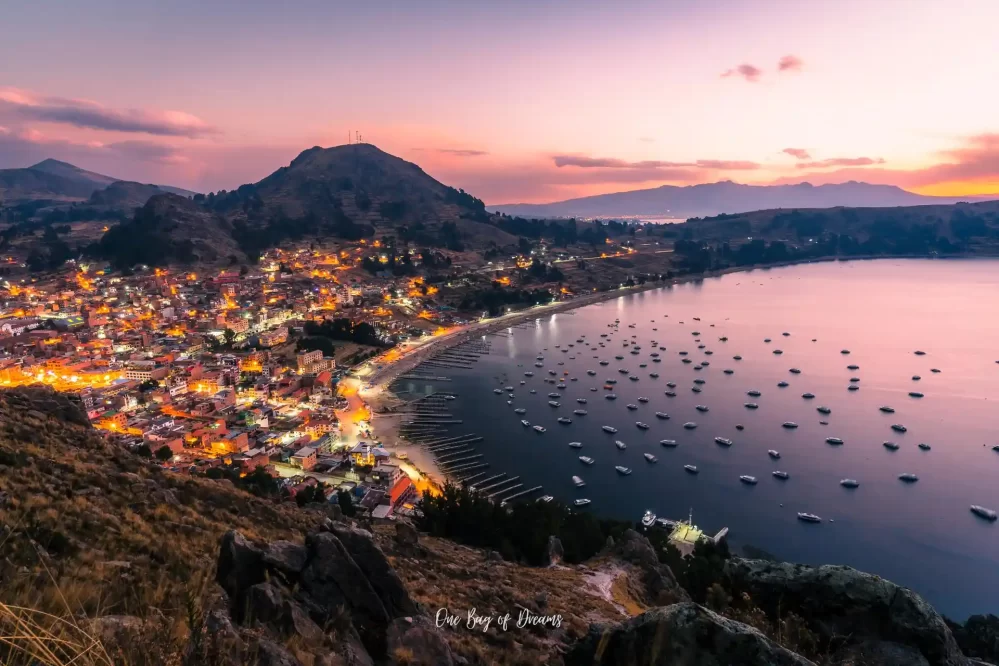
Ride Down the Death Road
One of the most exhilarating experiences you can have in La Paz is riding down the infamous Death Road. This narrow, winding mountain road was once known as the most dangerous road in the world due to its high fatality rate. Today, it is a popular tourist attraction for those seeking a thrilling adventure. You can take a guided mountain bike tour down the road, which starts at an altitude of 4,700 meters and descends 3,600 meters to the town of Coroico. The views of the surrounding Andean mountains and valleys are breathtaking, and the adrenaline rush of riding down the narrow and steep path is unforgettable. It’s a must-do activity for anyone seeking an adventure in La Paz.
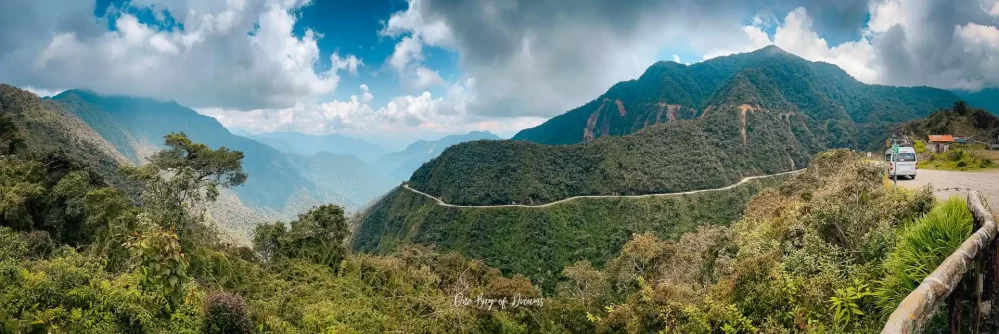
Read More: If you are in for a great adventure, don’t miss the upcoming guide of How to Ride Down the Most Dangerous Road by Bike!
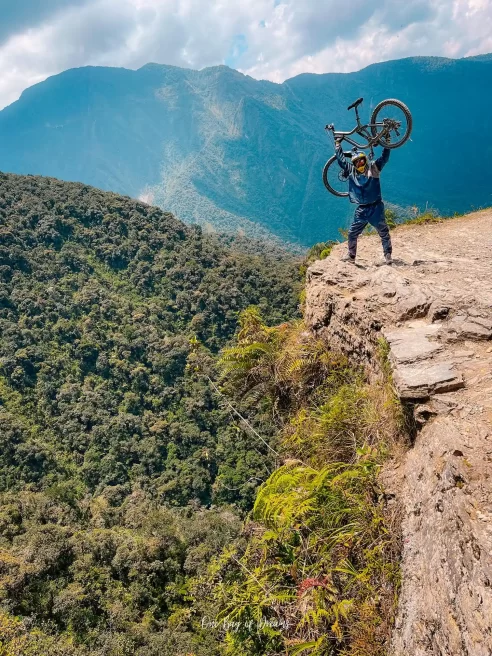
Climb Huayna Potosí
Climbing Huayna Potosi, a snow-capped mountain rising to over 6,000 meters, is a popular activity for adventurous travellers visiting La Paz. This challenging climb typically takes two or three days and requires a good level of physical fitness, as well as appropriate gear and a guide. However, the stunning views from the top and the sense of achievement make it all worth it. Along the way, you’ll pass through high-altitude landscapes, including glaciers, ice walls, and crevasses, as well as glimpses of the Andean wildlife. Climbing Huayna Potosi is an unforgettable experience that will test your limits and give you memories to last a lifetime.
Read More: If you are planning to climb Huayna Potosi in La Paz, check out the guide of How to Climb Huayna Potosi!


Arriving in La Paz
To get to La Paz in Bolivia, there are two main options that you should consider. Both options, that I listed below are recommendable and totally depend on the route that you are taking through South America.
By Plane
If you arrive in Bolivia by plane, there is a high chance that you will land in La Paz at Aeropuerto Internacional de El Alto (LPB). From the airport, you can either take a taxi or a bus into the city center.
By Bus
The Bus network in Bolivia is amazing. No matter if you want to come from Lake Titikaka, Uyuni or Sucre, there will be a bus connection with an overnight bus. Besides being better for the environment, it is also more affordable. For this reason, it is my preferred way to travel in Bolivia. A bus ticket from Sucre to La Paz will cost you around 130 Bolivianos.
Getting Around La Paz
La Paz can be a bit overwhelming to navigate for first-time visitors, but there are several ways to get around the city. The most common modes of transportation are buses, taxis, and colectivos (shared taxis). Buses are the cheapest option, but they can be crowded and chaotic. Taxis are plentiful, but it’s best to negotiate the fare before getting in or use Uber which is the easiest and safest option. Colectivos are a good option for shorter distances, as they usually have a fixed route and fare. Walking is also a great way to explore the city, especially if you’re staying in the city centre. Another popular mode of transportation in La Paz is the cable car, which provides stunning views of the city and is a fun way to get around. With a bit of planning and some patience, getting around La Paz can be an adventure in itself.
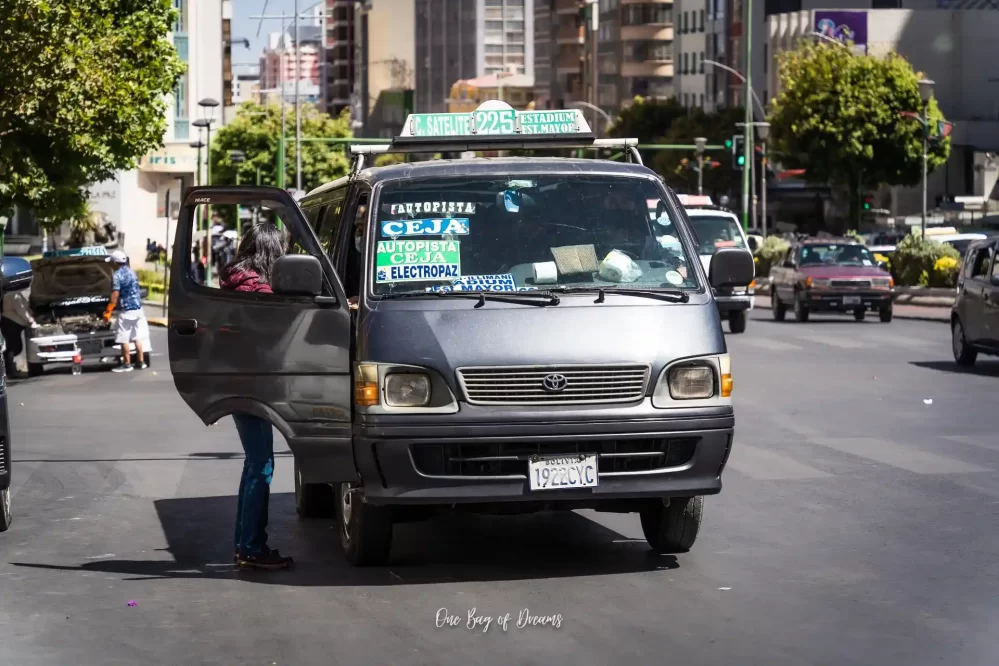
La Paz's Best Eats and Drinks
Welcome to the flavorful chapter of La Paz’s Best Eats and Drinks! In this bustling city nestled in the Bolivian highlands, culinary delights await around every corner. From traditional Bolivian dishes to international cuisine, La Paz offers a diverse and vibrant food scene that will satisfy even the most discerning palate. Below you will find a list of the best restaurants that I tried in La Paz and that I can recommend to you.
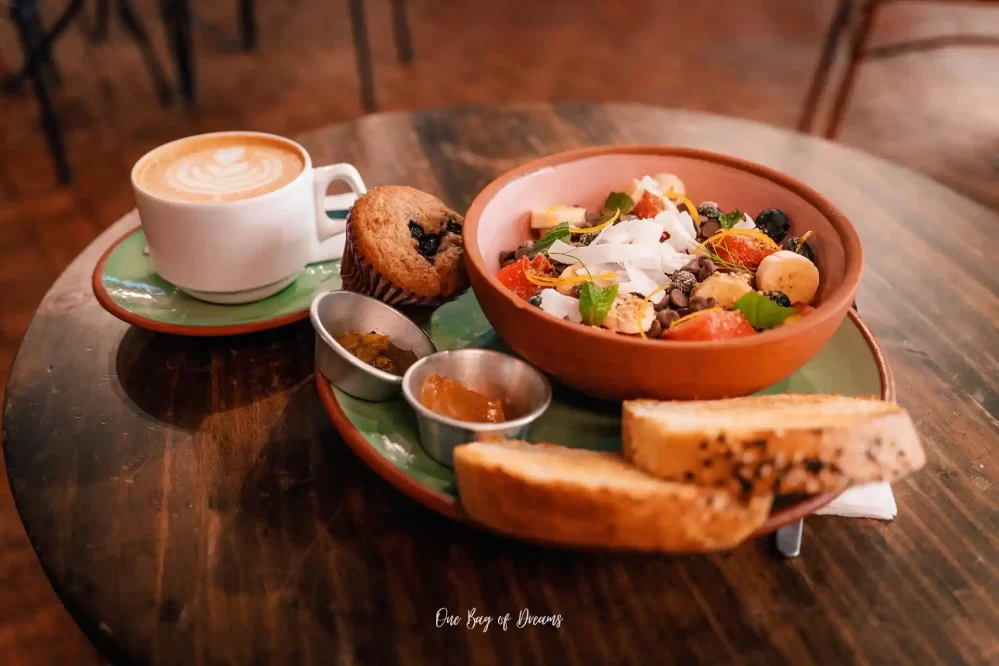
The Carrot Tree Sopocachi – Try the Pique a lo Macho or one of their delicious burgers.
- Kuchenstube – A great selection of different cakes and pastries.
- Café Typica – Delicious cakes, coffee and sandwiches.
Restaurant Japonés Kenchan – A super delicious set menu of authentic Japanese food.
- Selina La Paz – The daily menu is super affordable and rich in flavour.
- Marrakesh – Arabic food. Try the delicious falafel.
- Reineke Fuchs – Authentic german food.
Paceña La Salteña – Arguably one of the best Salteñas in La Paz.

Where to Stay in La Paz
La Paz has plenty of different accommodations to choose from in all different price categories. Personally, I stayed in two different hostels that I can highly recommend. You can find them listed below.
- Selina La Paz– Great hotel-like hostel with both, shared dormitories and private rooms. The breakfast menu is one of the best I ever had.
- The Adventure Brew Hostel – Nice hostel, is super closely located to the bus terminal and therefore a great option if you arrive with the night bus. They offer daily activities.
Best Season to Visit La Paz
La Paz in Bolivia is a city with a high altitude and diverse geography, which influences its weather patterns. The city has two distinct seasons: a dry season from May to October and a rainy season from November to April. The best time to visit La Paz depends on what you want to do and see. If you plan on trekking or climbing, the dry season is ideal as the weather is clear and the trails are easier to navigate. On the other hand, the rainy season is perfect for those who want to see the lush green landscapes and take advantage of lower prices and fewer crowds. Keep in mind that due to its altitude, La Paz can get quite cold at night, so it is important to pack warm clothes regardless of the season.
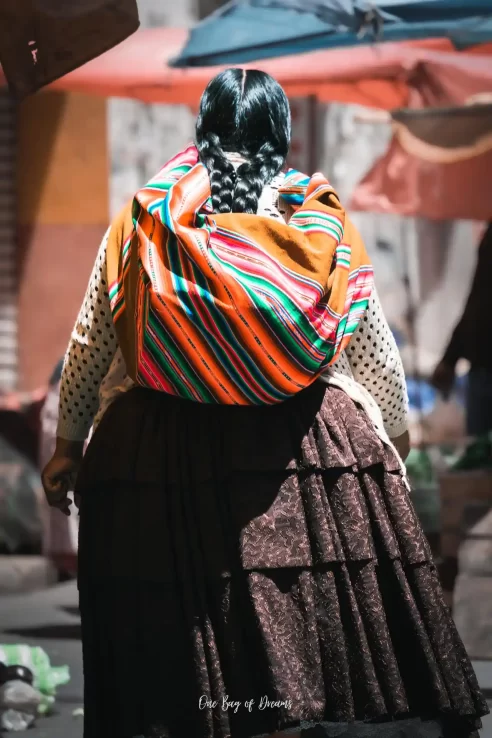
Read More: If you are planning to visit the Salt Flats in Uyuni, check out the Ultimate Guide of How to Visit the Stunning Salt Flats in Uyuni!
Your Budget for La Paz
In La Paz, Bolivia, I spent around 35 USD per person per day. This included my accommodation in a dorm room, entrance fees and tours, as well as food which I ate in restaurants all the time.
If you want to eat out in a restaurant, expect to pay between 3 – 12 USD for a meal.
Pin This La Paz Travel Guide For Later!
